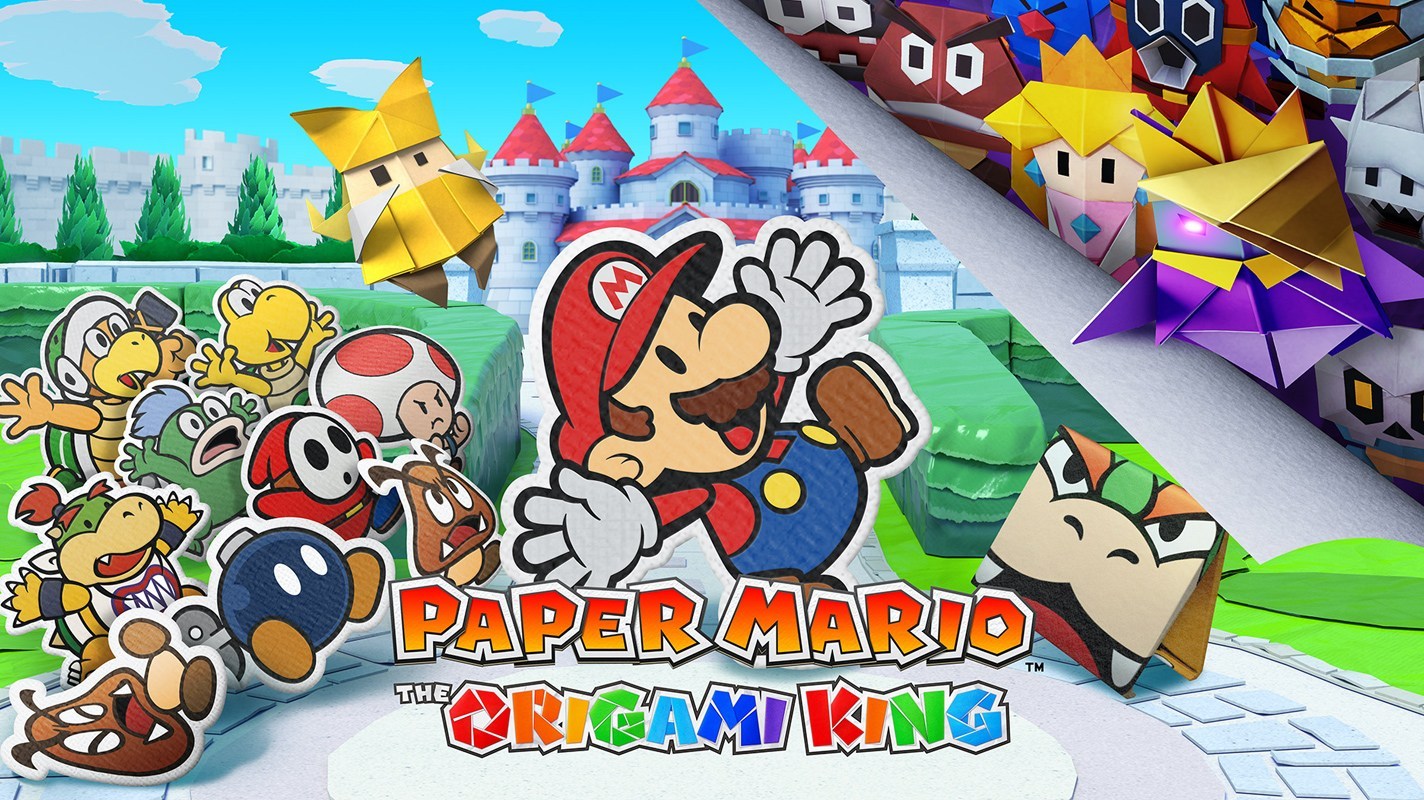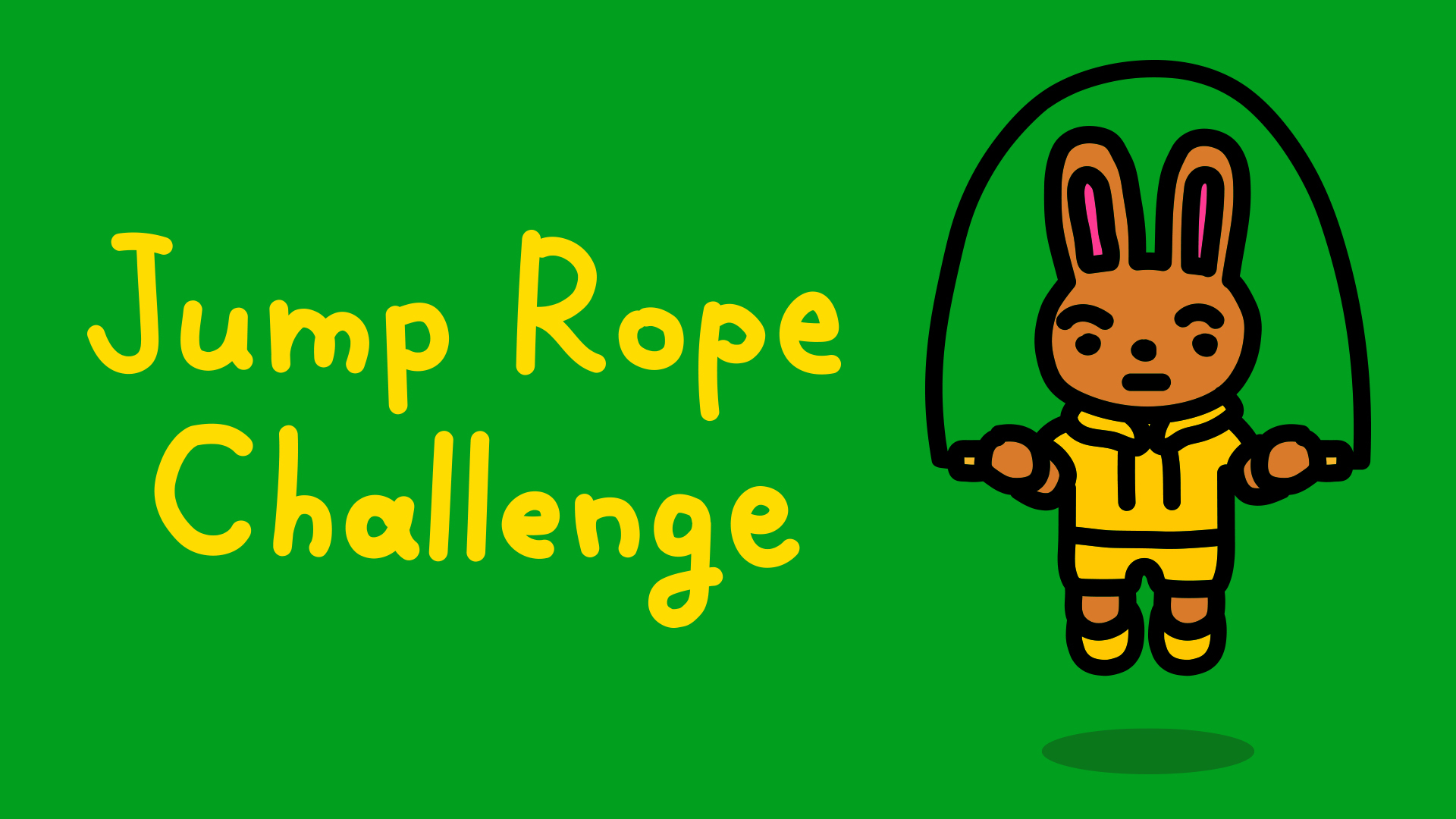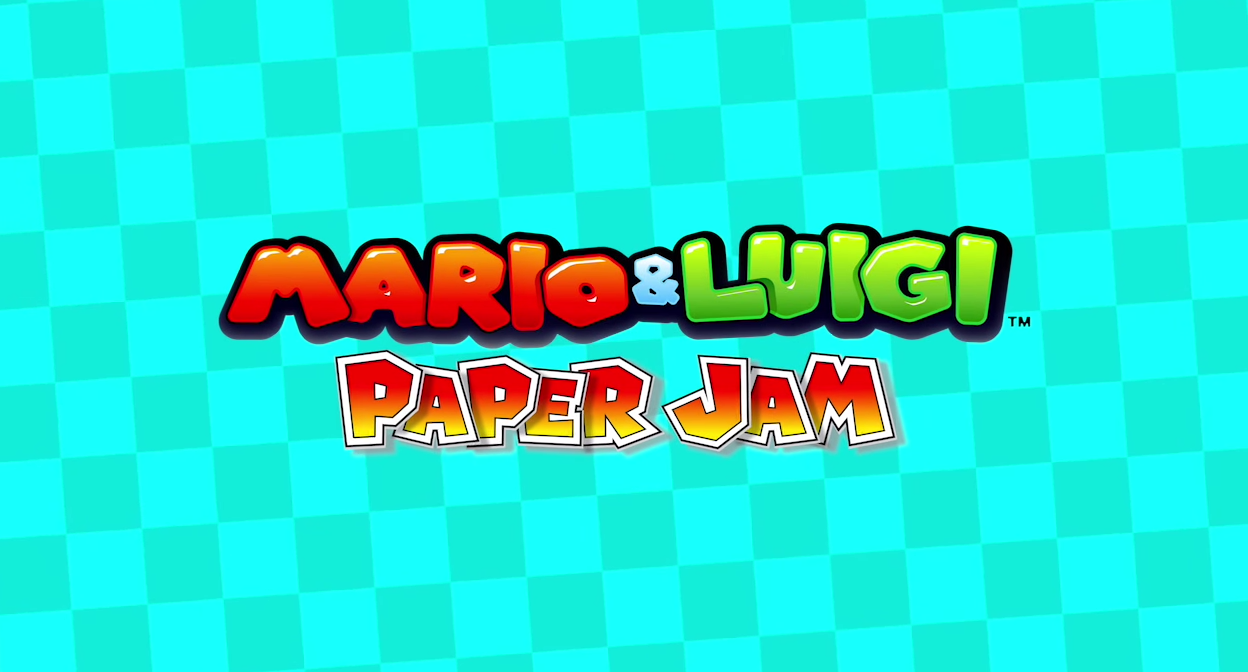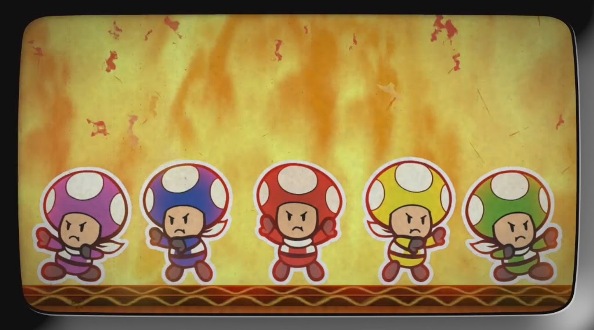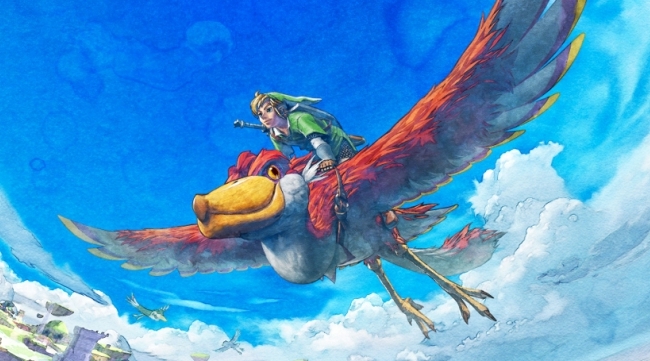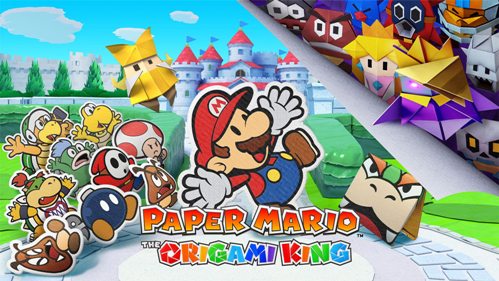
The Paper Mario series has been a favourite among Nintendo fans ever since the original game released on the Nintendo 64 in 2000 (or 2001 for Western territories). The series’ art direction, humour and storytelling has made it stand out from Mario’s other adventures. However, more recent releases haven’t met fan expectations, with many calling out the development team for making inferior design choices which have negatively impacted the experience. Paper Mario: The Origami King isn’t the true follow-up to The Thousand Year Door that fans have been begging for, but it’s nonetheless a great adventure that will entertain you from beginning to end.
Paper Mario: The Origami King begins with Mario and Luigi journeying to the Mushroom Kingdom’s Toad Town where they are celebrating the annual origami festival. When the duo arrive, however, the town is mysteriously deserted. Upon entering Princess Peach’s castle, they discover that Peach has been turned into origami and is acting a lot more sinister than her normal cake-baking self. Other members of the Mushroom Kingdom, including Bowser’s own troops, have also been turned into origami. The villain behind these events is revealed to be King Olly, the self-proclaimed King of Origami, whose sole mission is to turn everything into origami. As part of his nefarious plans, King Olly envelopes Princess Peach’s castle in streamers and transports it to the mountain tops. During the chaos, Mario meets King Olly’s sister, Olivia, who wants to stop her brother. Mario teams up with Olivia to unwrap the streamers, rescue Princess Peach and most importantly, put a stop to King Olly’s plans.
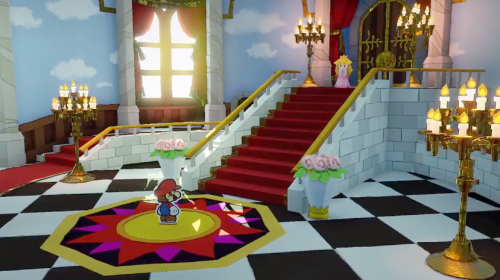
The story takes some dark turns, dealing with topics such as death and the general gloom that King Olly is inflicting on the Mushroom Kingdom. But the game is also packed full of humour and strong character development. Olivia, for example, is a wonderful ally for Mario; she always offers hints when requested and provides, often humorous, commentary. There’s one moment where Mario puts on a fake Goomba head which causes Olivia to laugh hysterically. Another character, Bobby, is a forgetful Bob-omb who just has unfortunate bad luck, often in comical fashion. It’s all these small moments which add charm to the world and draws players in. This review will avoid spoiling more of the story, but rest assure this is Paper Mario at its best in terms of the writing.
Throughout your adventure you will meet various characters, some of whom will become a party member. They will follow Mario and have unique skills which benefit the story. Professor Toad, for example, can read ancient hieroglyphics that are in ruins you explore. During battle players don’t control their partners, who instead attack autonomously after Mario has finished his turn. Partners also do not join you through the entirety of the story, instead they’re often regulated to certain areas or chapters only. It’s a shame because you spend all this time getting familiar with the character’s situation and overcome challenges together, only for the plot to quickly forget them and move on.
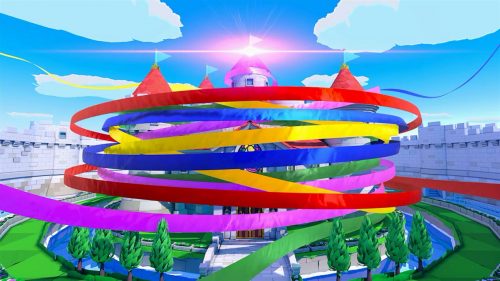
As the series has progressed, Paper Mario has gone from side scrolling levels to larger 3D areas to explore. The Origami King takes things further, with players exploring a Feudal Japan-inspired theme park, a forest, a sprawling desert area and at one point the open ocean which you traverse via a boat. Littered throughout the world are coins, question mark blocks, collectible figurines and other hidden goodies. In the lead-up to some boss fights, players must also navigate dungeons which are full of traps and puzzles to overcome. Think The Legend of Zelda for comparison, though on a smaller scale. The game continuously throws new ideas and locations at you. No environment overstays its welcome and you’ll quickly progress to the next area before repetition sets in. Coupled with the beloved paper craft art style, this is also one visually appealing game.
There’s a new confetti mechanic where players fill holes in the environment with confetti they have collected. It’s in ample supply – just defeat an enemy, whack a tree or collect bags of the stuff hiding in blocks. It’s oddly satisfying fixing the environment, watching it transform from a horrible mess to something of beauty. Mario has a few other new tricks up his sleeves as well; literally! There’s a 1,000-Fold Arms move where Mario, under certain circumstances, can stretch his arms to interact with the environment. You can peel back walls, bash things with your fists or reach and grab objects from afar. Olivia will also gain the ability to transform into Vellumental origami. These creatures are initially bosses in the game which, when defeated, grant Olivia the ability to transform into them. They have various effects, including lighting fires to solve puzzles, unleash blasts of water and create earthquakes which cause platforms to sink so Mario can access them. These abilities can also be sparingly used in battles.
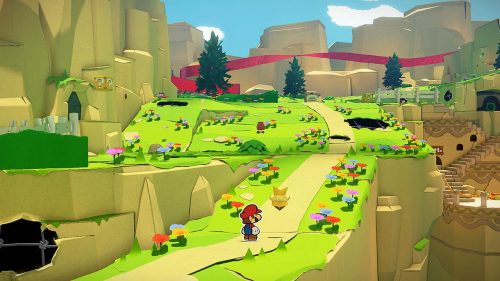
A large part of your time is going to be spent rescuing Toads which are hidden throughout the world. Some Toads are stuck in the ground with limbs poking out, others have been folded to resemble animals, and others are scrunched up in trees. The Toads will reward you with coins and battle items for rescuing them and are an integral part of the combat system, which we will get into a bit later. Paper Mario: The Origami King also keeps track of percentages of the Toads, confetti holes filled, treasure and question mark blocks that have been discovered in each area. For completionists, this will make it easy to identify anything you may have missed. One of the game’s main appeals is simply exploring and finding all these secrets. Early on you will be able to purchase items that alert you whenever there are Toads or question mark blocks nearby, which is helpful.
One of the biggest changes in Paper Mario: The Origami King is its combat system. Battles are initiated by approaching enemies, which then warps you to a ring arena. Enemies initially scatter themselves around Mario and you are given a short amount of time and a set number of moves to line them up together. By lining them up successfully you will receive a damage bonus, which is key to winning battles without taking any damage yourself. Mario is, by default, always equipped with boots that allow him to stomp on enemies and a hammer which lets him whack them. The boots let Mario stomp on up to four enemies in a straight line, while the hammer damages enemies in groups of four (two side by side). There is more strategic play here as well – if an enemy has a spike on its head, for example, you cannot stomp on the enemy without taking damage yourself. You must use the hammer instead. You have to consider these factors when lining up enemies, so it’s almost like solving a brief puzzle at the beginning of each battle.
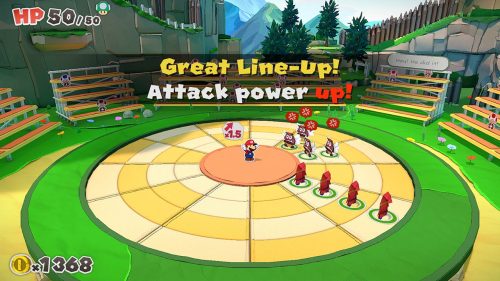
You are also able to equip and use other battle items during fights. Iron boots allow Mario to jump on the spiked enemies and the hurl hammer lets Mario throw a hammer to damage four enemies in a straight line. Shiny versions of the boots and hammer also have increased damage output. The catch is, these versions of Mario’s default attack items only have a limited number of uses before breaking. There’s a store in Toad Town where you can purchase more, though you should be able to find enough in the environments by playing normally to get through. It’s a let down that Nintendo keeps forcing these temporary items onto players. The mechanic was heavily criticised in Sticker Star and Color Splash, so it feels like Nintendo have only met fans half-way by giving them the standard boots and hammer which don’t break.
As mentioned previously, the rescued Toads play a role in battle. They act as the audience to the fight. Early in the game the stands around the ring will be empty, but as you progress the crowds build up and will cheer you on. For some coins you can even bribe the Toads to assist you; they will throw health and battle items, damage enemies and even solve the ring puzzle if you can’t quite line up the enemies perfectly. The Toads are great for when you find yourself in a jam.
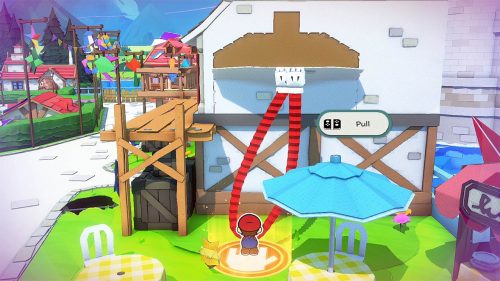
The battle system on its own does work and is engaging. It’s fun to solve the ring puzzle and work out the various strategies enemies require to defeat – even if many of them are standard Mario characters such as goombas and shy guys, etc. We’ve fought these guys countless times before, so there’s a good chance you’re going to already know how they’re best defeated! But surprisingly there’s one omission which makes battles almost pointless – the lack of reward. RPGs normally give players experience points which, in turn, makes the character stronger and unlock more abilities. Suddenly enemies encountered at the beginning of the game can be dealt with in a single move or they will simply run off at the sight of the player. But in Paper Mario: The Origami King you won’t get those experience points. Instead you get coins based on how well you perform; the same coins that are found everywhere else in the world just by exploring. Mario does get stronger throughout the game, but this is tied with Hearts which are usually awarded as part of normal story progression.
There’s just no point engaging enemies. You’re exploring the world, finding Toads and the other goodies, then you see an enemy patrolling an area. If you approach them, it takes a few seconds for the battle screen to load, a moment to solve the ring puzzle and then you can finally do the actual battle. You spend one to two minutes each time with this routine, just for some crappy reward at the end of it. So, this is where you choose to continue enjoying exploring the world, or you can take yourself out of that immersion for something that has little to motivate you. Ergo, you’re going to be avoiding fights where possible. The problem is not with the ring system itself, it’s the fact Nintendo have not given you a reason to fight.
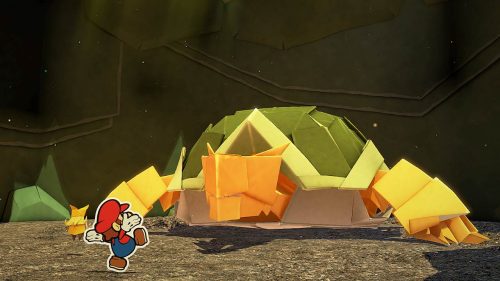
The ring system changes during boss battles. Instead of aligning the enemy to attack, you have to create a pathway to the boss. You place arrows in Mario’s path so that he will be lead to an attack square. Once again, strategy is at play here as certain attacks will be more effective against the boss than others. You will also be challenged to take down the boss’s own defenses before they’re open to your onslaught. Aside from the vellumentals which are origami animals (including a phoenix, a turtle and a polar bear), there’s also the Legion of Stationery. These bosses are stationary-themed and work for King Olly to protect the streamers. Be prepared to fight a box of coloured pencils, a hole puncher and a rubber band, among others. Despite how it sounds the boss fights are imaginative and really entertaining. You’ll look forward to these boss fights much more than the generic minion battles.
As one has come to expect from Paper Mario games, The Origami King features bright and colourful paper-themed visuals. The origami theme has given the development team a new angle to present as well, as it’s genuinely interesting to see the origami versions of characters. The contrast between 2D “flat” and 3D “origami” characters is interesting on screen, but the paper craft themed world means the styles compliment each other. The soundtrack is also great, featuring a number of electronic and acoustic music tracks. Battle themes are energetic while the overworld soundtrack is calm and appropriately themed for each area.

Paper Mario: The Origami King isn’t the follow-up that fans have been wanting, but it is also a step in the right direction. The world is engaging due to all the hidden goodies to track down, the strong story and humorous writing. But it’s ultimately let down due to the bizarre lack of reward for completing battles and the temporary weapons. If you were disappointed by Sticker Star and Color Splash, give this new entry a go as it is definitely more enjoyable, but keep in mind the series is clearly heading into a new direction.
Paper Mario: The Origami King was reviewed on a normal Nintendo Switch console with a review copy provided by Nintendo. For more information, check out the game’s official website.
- Great story and characters - Lots of Toads, secrets and goodies to uncover - Fantastic art direction and music
- Lack of rewards for completing battles - Party members don't follow Mario throughout the whole adventure - Temporary weapons

